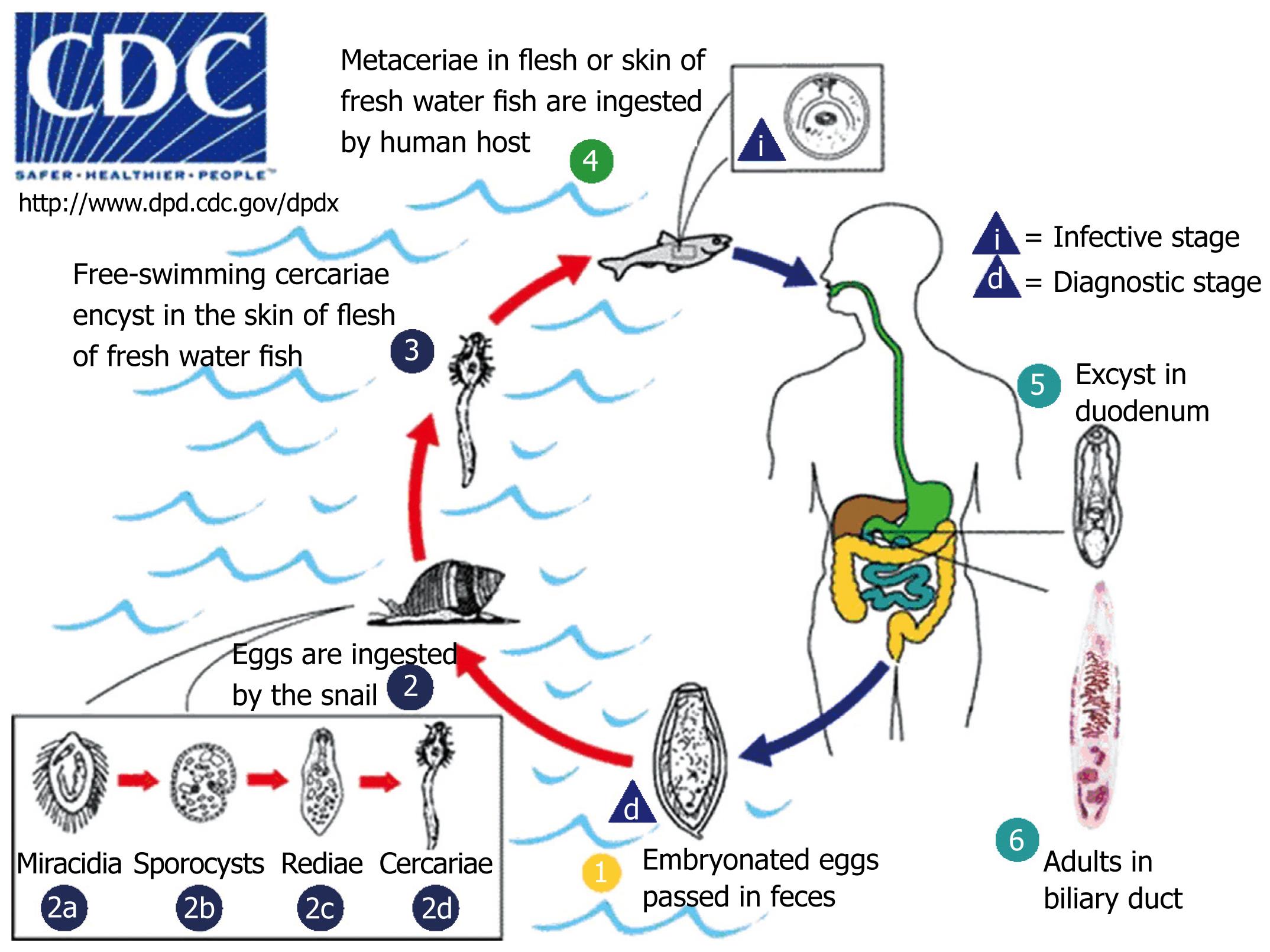Copyright
©2008 The WJG Press and Baishideng.
World J Gastroenterol. Feb 7, 2008; 14(5): 666-674
Published online Feb 7, 2008. doi: 10.3748/wjg.14.666
Published online Feb 7, 2008. doi: 10.3748/wjg.14.666
Figure 1 Life cycle of O viverrini.
Embryonated eggs are discharged in the biliary ducts and in the stool (1). Eggs are ingested by a suitable snail intermediate host (2). Each egg releases a miracidia (2a), sporocysts (2b), rediae (2c), and cercariae (2d). The cercaria is released from the snail and after a short period of free-swimming time in water, it penetrates the flesh of a freshwater fish, where it encysts as a metacercaria (3). Humans are infected through ingestion of undercooked or raw freshwater fishes (4). The metacercaria excysts in the duodenum (5) and ascends the biliary tract through the ampulla of Vater. Maturation to adulthood takes approximately one month (6). (Adapted from: http://www.dpd.cdc.gov/DPDx/HTML/Opisthorchiasis.htm).
-
Citation: Kaewpitoon N, Kaewpitoon SJ, Pengsaa P, Sripa B.
Opisthorchis viverrini : The carcinogenic human liver fluke. World J Gastroenterol 2008; 14(5): 666-674 - URL: https://www.wjgnet.com/1007-9327/full/v14/i5/666.htm
- DOI: https://dx.doi.org/10.3748/wjg.14.666









